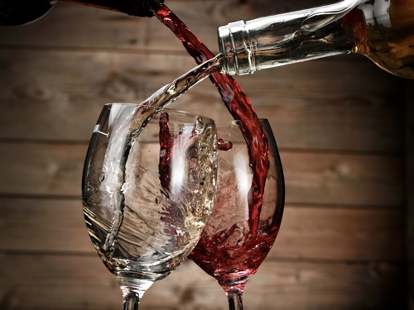
Did you know that there are over 1300 wine grape varieties used for commercial production today, and only about 100 of these grapes make up 75% of the world’s vineyards? In fact, the wine grape with the highest production in the world is Cabernet Sauvignon – famous for producing fine red wine with its firm tannins and rich taste with blackcurrant notes and woodsy flavours, not forgetting a great potential for ageing.
Wine grapes are not at all like the regular table grapes that you find in supermarkets. The former is smaller, has thicker skin and comes with seeds. Since wine grapes take an entire season to ripen, wine can only be produced once a year. While you can never discuss wines without mentioning wine grapes, there is so much more to wine drinking than wine types and grape types.
If you enjoy your occasional red or white wine, you might be familiar with terms such as acidity, tannin and body, but are you drinking your wines right? Read on to find out.
Serving Wine
Have you ever tasted a can of Coke at room temperature? It tastes nothing like a refreshing carbonated drink – which brings us to the point that every beverage has its ideal serving temperature and wine is no exception.
Ideal Serving Temperatures for Wines

Red Wine
Red wine tastes better when served just slightly below room temperature at 12 degrees Celsius to 20 degrees Celcius.
White Wine
White wines taste the best at about 7 degrees Celsius to 14 degrees Celsius. Zesty white wines can be served at cooler temperatures while oak-aged ones on the warmer side.
Sparkling wine
Sparkling wines can be served between 2 degrees Celsius to 7 degrees, but serve high-quality Champagnes at white wine temperatures for a better tasting experience.
Decanting – is it necessary?
If you have ever spoken to seasoned wine drinkers in Singapore, they almost always swear by decanting their wines before serving. The go-to method would be to pour wine into a glass pitcher or wine decanter and let it sit for 30 to 45 minutes.
The decanting period will allow the wine to “breathe” as exposing it to air enhances the wine’s flavour by softening the tannins and releasing gases that have developed in the bottle with the absence of oxygen. Aerating the wine will allow flavours and aromas of the wine to expand after laying dormant for some time.
Besides, if you ordered a bottle of cheap wine to enjoy at home, you can avoid the garlic-like aroma by decanting it first.
Choosing Proper Glassware

Though it might seem unassuming, but choosing the right wine glass absolutely matters when it comes to a great wine tasting experience. This is due to the fact that the glass’ shape and design affects the amount of air that comes into contact with your wine, and thereby impacting its flavour and taste.
In general, red wines should be enjoyed in a glass with a wider bold to allow bolder aromas to merge. The wider glass will also allow more aromas to reach your nose while the wine aerates.
On the other hand, white wines should be poured in a narrower glass to channel its subtle aromas towards your nose. The lesser surface area of the bowl also helps keep the wine chilled for a longer time.
Order Your Favourite Wines on JARBARLAR
Looking to get your wines online during this period of heightened alert in Singapore? Opt to order online and have your wines delivered to your doorstep instead of shopping for wines at the supermarket! Whether its red, white or sparkling wines that you are searching for, we have it all here at JARBARLAR.
Browse through our online catalogue to see the many wines and other alcohols on sale at wholesale prices on our website now.





